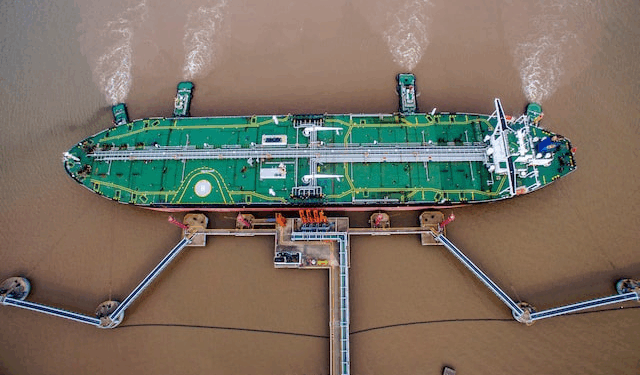Desert Feed | Singapore, July 1 – Oil prices remained relatively stable on Tuesday, following a dip earlier in the session, as investors focused on the upcoming OPEC+ meeting and its likely decision to raise production in August.
By 06:35 GMT, Brent crude had edged up by 10 cents (0.2%) to trade at $66.84 per barrel, while U.S. West Texas Intermediate (WTI) was up by 9 cents (0.1%) to $65.20 per barrel. Analysts noted that the oil market is treading cautiously ahead of the OPEC+ policy meeting set for July 6.
“The market is now concerned that the OPEC+ alliance will continue with its accelerated rate of output increases,” said Daniel Hynes, Senior Commodity Strategist at ANZ, in a note to clients.
According to four OPEC+ sources who spoke with Reuters last week, the group — comprising the Organization of the Petroleum Exporting Countries and its allies, including Russia — is expected to approve a further production hike of 411,000 barrels per day (bpd) in August. This would mark the fourth consecutive monthly increase, following similar moves in May, June, and July.
If finalized, the total additional supply from OPEC+ for 2025 would rise to 1.78 million bpd, roughly 1.5% of global oil demand, easing concerns about tight supply and offering some relief to energy-importing nations.

Analysts: Market Appears “Well Supplied” for Rest of the Year
Commodities strategists at ING commented that the expected increase in supply would likely leave the oil market “well supplied for the remainder of the year.”
“Expectations for a comfortable oil balance, along with a large amount of OPEC spare production capacity, appear to be comforting the market,” ING analysts noted.
The sentiment reflects a broader belief among traders and institutions that there’s no immediate threat of a supply crunch, especially with geopolitical tensions easing and demand growth showing signs of slowing in key economies like China and the EU.
U.S. Tariffs and Economic Uncertainty Add Pressure
Oil prices are also being held in check by uncertainty surrounding U.S. trade tariffs, which could impact global economic growth and, in turn, reduce oil consumption.
U.S. Treasury Secretary Scott Bessent warned that countries involved in ongoing negotiations may soon be hit with sharply increased tariffs. The temporary 10% tariff rate is set to expire on July 9, with rates potentially reverting to 11%–50%, as originally outlined by former President Donald Trump on April 2.
This trade policy volatility has created additional concerns about oil demand, especially if higher tariffs restrict global industrial activity.
Morgan Stanley Forecasts Brent to Fall to $60
Global investment bank Morgan Stanley projected that Brent crude may drop to around $60 per barrel by early 2026, citing a combination of stable global supply, rising non-OPEC output, and decreasing geopolitical risks.
Following the recent 12-day Israel-Iran conflict, oil markets witnessed short-term volatility. The conflict, which began on June 13 with Israeli strikes on Iranian nuclear facilities, briefly pushed Brent prices above $80 per barrel. However, after U.S. airstrikes and a subsequent ceasefire announced by President Trump, prices quickly declined, stabilizing near $67.
Morgan Stanley analysts estimate that global supply may exceed demand by 1.3 million bpd in 2026, reinforcing their view of a softer oil market in the long term.





